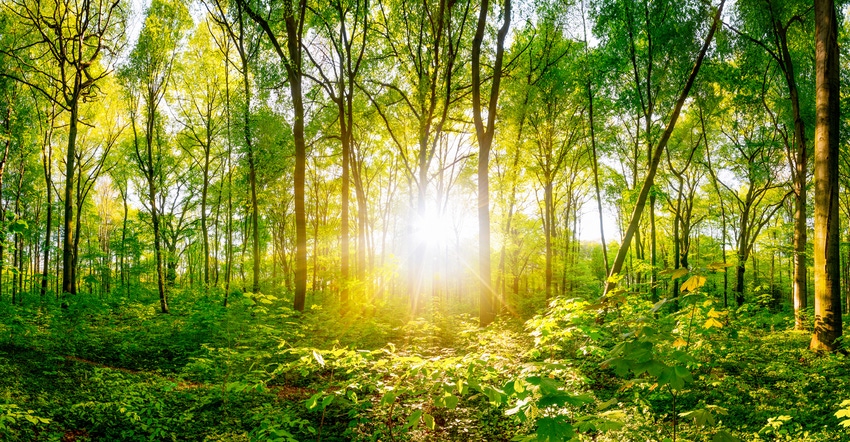January 31, 2020

Planting trees can yield a lot of benefits for the environment and landowners. But getting all those benefits takes careful planning and execution.
Many tree planting efforts fail due to poor planning, lack of achievable goals or lack of information on how to do it right the first time. So, before you begin selecting tree species to plant, think about what you want to accomplish. Are you planting for a windbreak, wildlife habitat, timber production, recreation or a combination of these benefits?
Strive for plant diversity and avoid monocultures. Choose well and plant wisely.
For example, woody shrubs such as viburnum, dogwood, lilac and serviceberry are good choices for “living snow fences.” Small trees such as plum, crabapple and hawthorn provide fruit for wildlife and bloom in spring.
Larger trees can be used for larger spaces or if you are looking to replant after a timber harvest. Good choices include bur oak, white oak, northern red oak, eastern black walnut and hickory.
For landscape plantings, Ohio buckeye (unless you are an Illini fan), hickory and hackberry make good selections.
If you’re looking for an elm, pick one that’s less susceptible to Dutch elm disease, such as frontier, commendation, accolade, triumph, Princeton or prospector, to name a few.
For wet, low-lying or poorly drained areas, think bald cypress, river birch or swamp white oak.
Match the site
Regardless of your plant selection, be sure to identify the soil types, drainage and topography of your planting site to make sure your plant selection is compatible. If you plant the wrong plant on the wrong site, it will probably never reach its potential and be subject to chronic insect pests and diseases.
Young trees will perform better and get a better start if they are not in competition with perennial grasses and weeds. Eliminate competing weed growth from your planting area prior to planting. Mulching around the trees can help keep weeds in check and reduce erosion. Annual grasses such as winter wheat, rye and some small legumes like small clovers may make a good temporary cover until young trees get established.
If the soils on the planting site have been compacted by equipment, consider disking or subsoiling the area to help tree roots penetrate and expand into the adjoining soil following planting.
Locate a high-quality public or private tree seedling nursery for purchase of your planting stock. Conservation trees are often sold as bare-root seedlings or as containerized stock, so consider costs and logistics of shipping and planting in your budget. Ordering early may be important to make sure you get the stock you need.
If you are planning on planting trees for a conservation purpose on your farm, you may be eligible for the Environmental Quality Incentives Program, a Natural Resources Conservation Service program. They will help you with technical and financial assistance. For more information on EQIP, contact your local NRCS office. Other sources of help include local Department of Natural Resources and professional foresters, Extension professionals, and USDA conservationists.
Miller is a horticulture professor at Joliet Junior College in Joliet, Ill., and a senior research scientist in entomology at The Morton Arboretum in Lisle, Ill. Email your tree questions to him at [email protected].
About the Author(s)
You May Also Like




